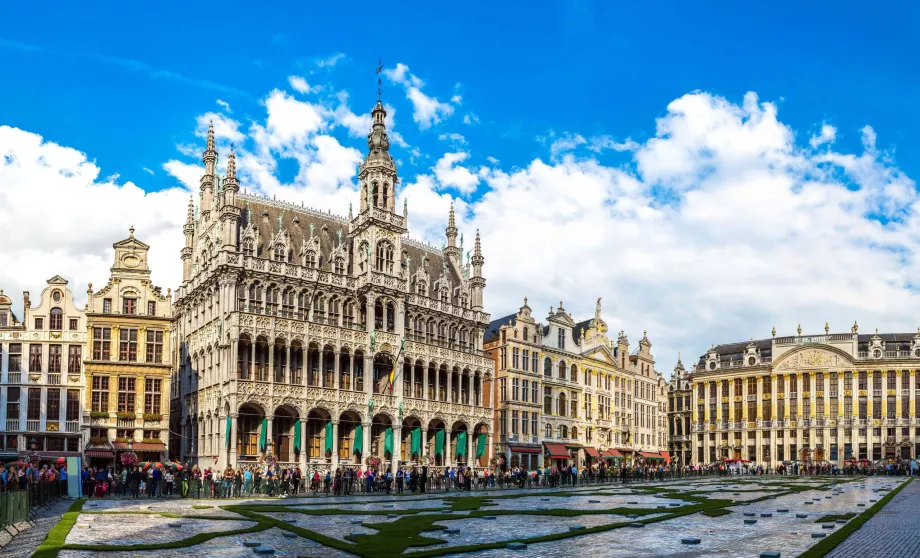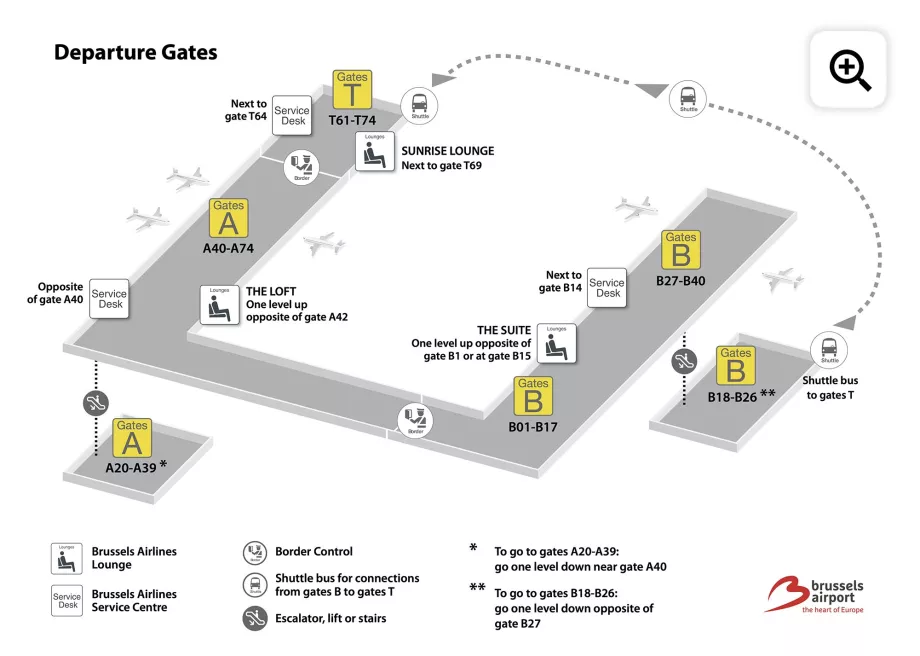Transfer at Brussels Airport

The single terminal is quite large and the marching distances are large. The public areas of the terminal (arrivals and departures counters) are common to all flights.
Beyond the security checkpoint, the passenger flow is then divided into two parts.
- Left - departure gates "A" for Schengen flights and "T" for non-Schengen flights
- Right - departure gates "B" for non-Schengen flights
Open 24 hours a day.
Cheap hotels near Brussels Airport
Although the terminal has a one-building concept, long walking times must be expected, even 20 minutes or more to the more distant gates.
Transfer between flights
If you transfer between gates A and A, you do not have to leave the transit area at all and do not go through security or passport control. The transit area is shared by arriving and departing passengers, so just step off the plane into the concourse, find the gate of the connecting flight on the first board and walk freely to it.
If you are transferring from gate A to gate B or T or vice versa, you must go through passport control.
If you are transferring within the B or T gate area, you do not go through passport control. Although Gates B and T are separated by the "Schengen" zone of Gates A, you must not enter this zone when moving between Gates B and T. Therefore, there is a free shuttle bus running around the airport area approximately once every 10 minutes.
You'll be fine with 20 minutes to change planes for Schengen travel, 45 minutes for non-Schengen travel and 60 minutes for flights to the USA. These times are the minimum transfer times on a single ticket.
If you will be connecting on two separate tickets, 2.5 hours is the minimum time you should allow between flights and even then it doesn't provide much reserve time.
Airport map
To get a better idea of the shape of the airport terminal, the location of services and the organisation of transfers, you can download a map from the airport website.
Any questions left?
If you have any questions or comments about the article...
3 comments
Hi, we are looking to come in from UK (non Schengen) and fly out to Ljubljana (shengen) so assume in on B gates and out on A gates. both flights with Brussels airlines and i know they say they are responsible etc, but we only have 1 hour transit, and knowing most flights actually board a good 30 mins before departure, is this realistic. thanks

If we change from A gate to B gate (for a non-Schengen flight) at Zaventem, do we only go through passport control or also through security? I need some estimate of the time needed for the transfer...thanks!
Transfer from A gates to B gates by passport control only. For EU passports there are automatic gates next to the regular counters.
Beware, there may be a security check in the departure lounge (example flights to the USA).



Despite what the cabin crew on Brussels Airlines told me you do not have to go through immigration in Brussels Airport if you are transiting Non-Schengen to Non-Schengen. We were transferred from the incoming LHR flight via bus and on arrival at the B gates you walk across the concourse slightly to your left and follow the red transfer signs to T gates - don’t follow the A gates to your right. You then get on another bus which drops you at the T gates. No security or immigration the whole process took about 15 minutes from disembarking the first plane to getting to the lounge. I’d allow 30 minutes however in case you miss the shuttle that runs every 10 minutes or so.
Yes, that's right. See information above. I'll edit the text to make it clearer :) Thanks for the update!